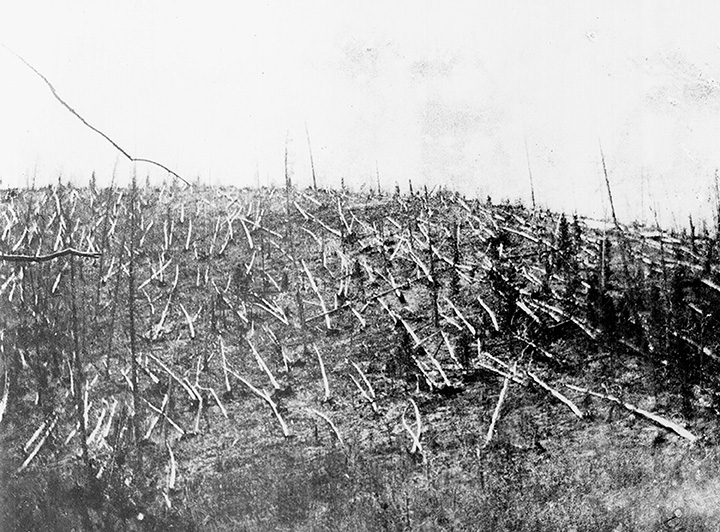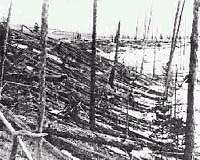

This phenomenon lasted for several more nights. The Beta Taurid meteor shower peaks on June 28 or 29 it is caused by one of the debris streams from that comet, and is a daylight shower, detected by radar, because it is in the out-going part of the orbit and therefore, like the Tunguska object, hits the sunward side of Earth. In a number of cities at night it was possible to read a newspaper printed in small font, and in Greenwich, at midnight a photograph of the seaport was obtained. In 1908, a small asteroid exploded over Siberia’s Tunguska which ruined woodlands across 800 miles after it went undetected by experts. In Tunguska some luminosity was reported up to a distance of 710 km. The clouds, formed at an altitude of about 80 kilometers, intensively reflected the sun's rays, thereby creating the effect of clear nights, even where they had not previously been observed. Asteroid could cause millions of casualties claims Carlson. The Chelyabinsk meteor was seen over a distance of over 700 km and felt over 96 km away. The radiance of the sky was so strong that many residents could not fall asleep. In the first day after the accident, strange atmospheric phenomena were observed in almost the whole northern hemisphere - from Bordeaux to Tashkent, from the coast of the Atlantic to Krasnoyarsk - twilight, unusual in brightness and color, night glow of the sky, bright silvery clouds, daylight optical effects - halo and crowns around the sun. The extremely powerful Tunguska blast of an unknown extraterrestrial object occurred at June 30. An explosive airwave that skirted the globe was recorded by many meteorological observatories of the world. While the leading theories of what caused the mid-air explosion are that an asteroid or comet shattered in an. Simultaneously, under the influence of light radiation tens of kilometers around the taiga flared up. The 1908 explosion over the Tunguska region in Siberia has always been an enigma. Several lines of evidence indicate that Cheko, a small lake close to the epicentre of the 1908 Tunguska Event (TE), fills a crater left behind by a fragment. The cause of these explosions is unknown, but a meteorite impact has been suggested as a likely cause. The asteroid is believed to have been roughly 60 meters.

The glare in the sky was compared to the atmospheric effects that followed the. Up till now, scientists believed that Tunguska event was caused by the airburst of an asteroid about 5 miles above the surface of the Earth. For the following two nights the skies of Europe and Asia were unusually bright.

In a matter of seconds, the forest was blown up by a blast wave within a radius of about 40 kilometers, animals were destroyed, and people were injured. Tunguska event is the name for a very large mid-air explosion that occurred on 30 June 1908 in Siberia.Most eyewitnesses talk about one or more explosions that happened around 7:15 a.m. At 7.17am on June 30th, 1908, a huge object exploded six miles above the Stony Tunguska River area, central Siberia, causing an atmospheric shockwave that circled the Earth twice.


 0 kommentar(er)
0 kommentar(er)
